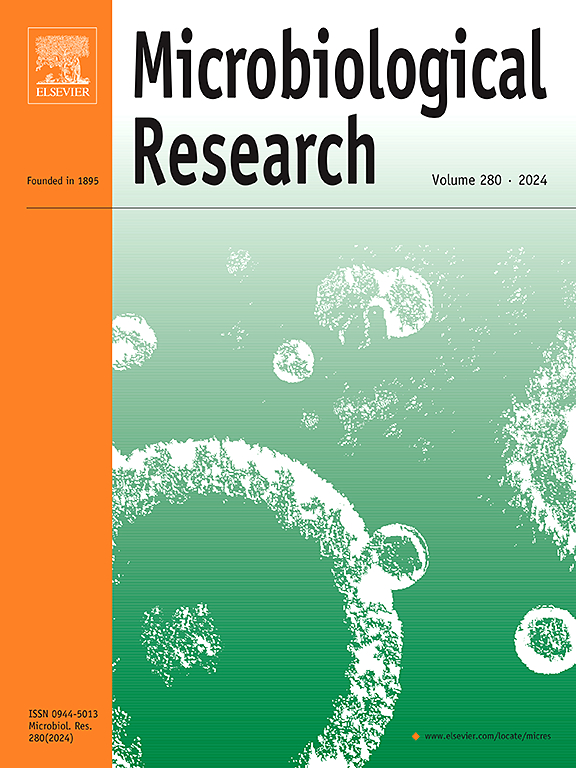Diverse effects of Bacillus sp. NYG5-emitted volatile organic compounds on plant growth, rhizosphere microbiome, and soil chemistry
IF 6.1
1区 生物学
Q1 MICROBIOLOGY
引用次数: 0
Abstract
Bacterial strains in the rhizosphere secrete volatile organic compounds (VOCs) that play critical roles in inter- and intra-kingdom signaling, influencing both microbe-microbe and microbe-plant interactions. In this study we evaluated the plant growth-promoting effects of VOCs emitted by Bacillus sp. NYG5 on Arabidopsis thaliana, Nicotiana tabacum, and Cucumis sativus, focusing on VOC-induced alterations in plant metabolic pathways, rhizosphere microbial communities, and soil chemical properties. NYG5 VOCs enhanced plant biomass across all tested species and induced significant shifts in rhizosphere microbial community composition, specifically increasing relative abundance of Gammaproteobacteria and reducing Deltaproteobacteria (Linear discriminant analysis Effect Size, p < 0.05). Soil analysis revealed a considerable reduction in humic substance concentrations following VOCs exposure, as detected by fluorescent spectral analysis. Using SPME-GC-MS, several novel VOCs were identified, some of which directly promoted plant growth. Transcriptomic analysis of N. tabacum exposed to NYG5 VOCs demonstrated activation of pathways related to phenylpropanoid biosynthesis, sugar metabolism, and hormone signal transduction. Within the phenylpropanoid biosynthesis pathway, a significant upregulation (p adj = 1.16e-14) of caffeic acid 3-O-methyltransferase was observed, a key enzyme leading to lignin and suberin monomer biosynthesis. These results highlight the complex mechanisms through which bacterial VOCs influence plant growth, including metabolic modulation, rhizosphere microbiome restructuring, and soil chemical changes. Collectively, this study highlights the pivotal role of bacterial VOCs in shaping plant-microbe-soil interactions.
求助全文
约1分钟内获得全文
求助全文
来源期刊

Microbiological research
生物-微生物学
CiteScore
10.90
自引率
6.00%
发文量
249
审稿时长
29 days
期刊介绍:
Microbiological Research is devoted to publishing reports on prokaryotic and eukaryotic microorganisms such as yeasts, fungi, bacteria, archaea, and protozoa. Research on interactions between pathogenic microorganisms and their environment or hosts are also covered.
 求助内容:
求助内容: 应助结果提醒方式:
应助结果提醒方式:


